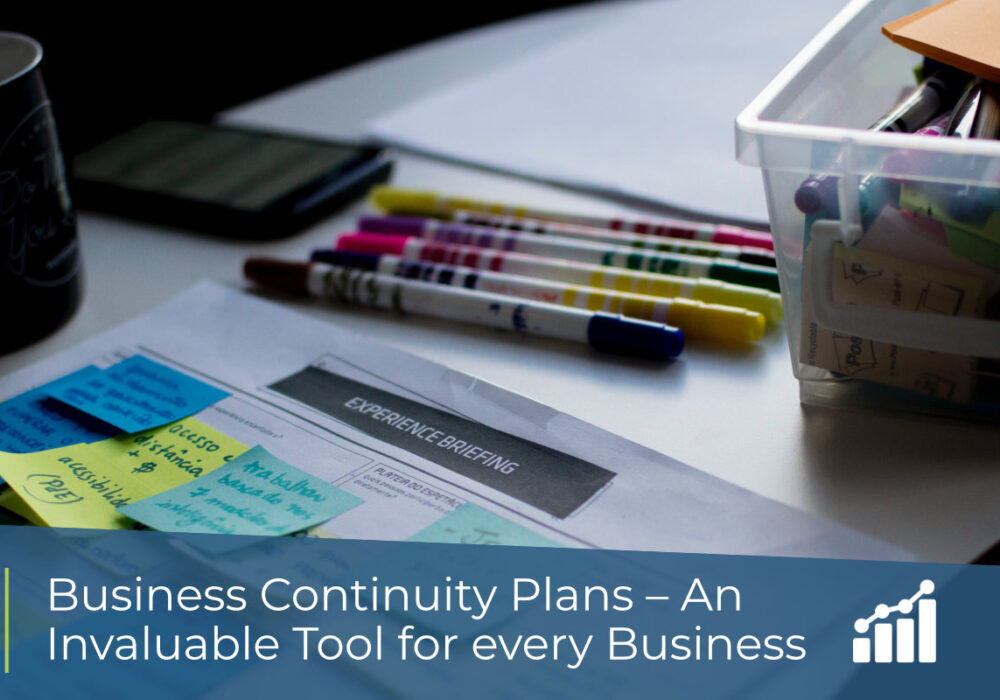The online presence in the world continues to grow, and with it so do the opportunities for cyber criminals to infiltrate and cause carnage on our systems. We all think we have some level of technical prowess, but the majority of us behave in a way that is unsatisfactory to guarantee a secure and productive working online environment. Disaster recovery is one of the most critical reasons for having a business contingency plan. You need to be prepared for any eventuality, so you should know what procedures to follow should a cyber attack occur.
We never know when a disaster will strike! In regard to cyber security and attacks, every incident is different to the last – they may bare some similarities to each other, but often the code is designed in such a way as to bypass Firewalls and the other security measures you have in place.
If you want your organisation to survive and thrive during a disaster, you must construct, implement and regularly test a clearly laid out disaster recovery plan for all of your staff to follow in their daily duties. Not having one could leave you in a position where operations must cease indefinitely, as with no data the processes of some businesses would be lost.
What is business continuity?
Business continuity is the practice of quickly resuming business operations in the event of a serious interruption regardless of the cause.
Your business continuity plan will outline the exact procedures and instructions your entire organisation must follow in the eventuality of a disaster. Ideally, it will cover every part of your business and allow everyone to continue working at least to some capacity.
Many people believe that a disaster recovery (DR) plan and a business continuity (BC) plan are the same thing. However, a DR plan is constructed for the purpose of restoring infrastructure, whereas a BC plan is designed to ensure that an organisation can continue operating during a crisis. Your DR plan is a close addition to your business continuity plan, as a business continuity plan looks at the continuity of the entire organisation (and not just the infrastructure) to keep it operational.
You need to be willing to delve deep into the inner workings of your organisation, and perhaps find out some truths along the way. Ask yourself some questions – can every department in your organisation run to some semblance of their original capacity? What if a pipe burst and destroyed your hardware? What is the next step, where will everyone work, how do you get to your backups, do you need to stop certain parts of the organisation operating to move resources where they will be better used? The deeper you go, the better the results at the end.
The business impact analysis (BIA) section is an often-overlooked part of your business continuity plan. It quantifies the impact of a sudden loss of business functions – as we said earlier, resources may be better utilised elsewhere. Such analysis will give you the insight to make some key decisions on which areas, if any, you can afford to lose over others. Damage limitation is key; the damage will always be there, but how deep that damage goes is down to your planning.
Why is a business continuity plan important?
As you already know, your customers are the lifeblood of your organisation, because without them you wouldn’t have an income – it is essential that you hold on to as many loyal customers as possible (as much as customers can be loyal these days). There is no better way to prove your worth than by handling unforeseen circumstances well, and hence prove to your client base – and any competition watching from the wings – that you can protect their personal data whilst simultaneously providing a top-quality service, no matter the circumstances.
Restoring IT is an integral task for most companies. This has brought about an influx of disaster recovery solutions – IT can implement those solutions but what about everything else?
It’s great that you have the latest and greatest IT, but your organisation really depends on its people and processes. As we said above, handling incidents effectively will boost confidence in your company – prospective clients grow confident that you can do what is needed to offer a top quality and safe service.
What does a business continuity plan look like?
So, where to begin – start by assessing your business processes, determine which areas of that process are vulnerable, then in turn comprise a list of what your potential losses would be if those processes were to go down for different time periods. This, in turn, allows you to build a list of those that you would rather lose or divert resources from and to.
Next, develop a plan. This involves six general steps:
• Identify the scope of the plan – How far are you going to go? It makes sense to be as comprehensive as possible as there is no point in choosing an area of the business to concentrate on, then later down the line another part of your business effects that plan and you have to change it anyway.
• Identify key business areas – The cross over points in particular; the points where Sales and Manufacturing overlap, for example.
• Identify critical functions. Which processes are essential to the operation of your business?
• Identify dependencies between various business areas and functions – If you know how large the reliance is then you also know how important it is to get back up and running.
• Determine acceptable downtime for each part of the business – Some, of course, will be practically zero because no downtime is acceptable, but others can be lived without for days.
• Create a plan to maintain operations. What procedures do you need in place in order to continue in business?
Create a checklist – you need to know what supplies and equipment are needed, where that plan is and who is going to be in charge of working through it at pace to ensure that everything is back operational as soon as possible, either on premise or in the Cloud. Be sure to include details of data backups, and contact info for emergency responders and key personnel who are capable of helping.
Alongside your BC plan should be a capable DR plan – as we said earlier. Restoration times must be guaranteed and it must align with what your business needs, because if it doesn’t then it is useless.
This can seem like a daunting task, so don’t do this alone – use your team. Your staff probably have a better idea of the inner workings of your organisation than you, as they use the systems daily and know their roles inside out, so find out from them what the key elements of the business are and what needs special care and attention. It is likely that once they begin and get comfortable with explaining you will not only create a good BC and DR plan but also a better functioning working environment when working in normal circumstances.
In our following article we will discuss the importance of reviewing and testing your BC and DR plans, to ensure that they are fully operational at all times.
The Right IT Provider
BCNS make business easier and more cost-effective by guaranteeing that you and your team are always connected to each other and your clients. We can also guarantee that your team are using the latest version of every application to ensure that your systems are secure and you are getting the best possible benefits from your tech. Our team of experts will assist you throughout the transition and beyond to be sure you achieve exactly what you desire. At the same time, we can reduce your expenses and improve your security as well as performance! Contact us now and find out how we can help you with your business communications and move into a more productive future.




